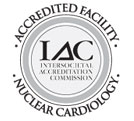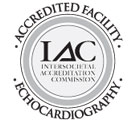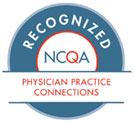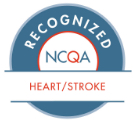Cardiology Associates of Schenectady, provides all the care you need for your heart in one place. We offer a comprehensive range of services — from diagnostic testing for heart and vascular disease to advanced interventional cardiology procedures — using state-of-the-art equipment.
Learn About Our Procedures & Programs
We perform stress testing, cardiac imaging, cardiac ultrasound, vascular imaging, and other cardiology tests for diagnosing heart and vascular disease in our offices. Read more about how each of the cardiology tests works and when it is needed. Here you can also find instructions on how to prepare for your exam:
Click here for COVID-19 Appointment Guidelines
Stress Testing
Electrocardiogram (ECG) Treadmill Stress Test
Also known as a stress test, or exercise treadmill test, this exam assesses the heart’s response to exercise by performing an electrocardiogram (ECG) during a walk on a treadmill. This test is often used when blockages in the heart arteries (known as coronary artery disease) is suspected. Sticky electrodes are placed on the chest and a blood pressure cuff is placed on the arm. You then walk on a treadmill. The speed and incline of the treadmill are increased gradually. The test is terminated when you are fatigued.
Preparation instructions for a treadmill ECG test:
- Clothing: Wear comfortable clothes including sneakers or rubber-soled shoes.
- Caffeine: Avoid coffee, tea, chocolate, and soda starting 24 hours before the test.
- Food: You can eat a small meal up to 2 hours prior to your test. Patients with diabetes may eat a small meal as necessary to ensure proper maintenance of blood sugar.
- Medications: Continue to take all prescribed medications unless told otherwise by your doctor. Please bring a list of all current medications to the ECG test.
Echocardiogram Stress Test
An echocardiogram stress test (also known as a stress echo) evaluates the condition of your heart and arteries. A cardiac sonographer will perform an echocardiogram, an ultrasound that creates images of how the heart beats and pumps blood. During this test, the ultrasound wand will be moved over your chest, emitting vibrations that you cannot feel. The vibrations echo off the heart structures and create the image, much like sonar works on a boat. Many are familiar with this type of imaging as it is used to image babies in the uterus. After your echocardiogram images are obtained, you will walk on a treadmill. The treadmill’s speed and incline will be increased gradually. The study is ended when you are fatigued. A second echocardiogram image is obtained after the exercise. The pre- and post-exercise images are then compared.
Preparation instructions for an echocardiogram stress test:
- Clothing: Wear comfortable clothes including sneakers or rubber-soled shoes.
- Caffeine: Avoid coffee, tea, chocolate, and soda starting 24 hours before the test.
- Food: Do not eat or drink anything except water for 4 hours prior to the test
- Medications: Continue to take all prescribed medications unless told otherwise by your doctor. Please bring a list of all current medications to the echocardiogram exam.
- Smoking: Do not smoke the day of the test, as nicotine interferes with the results.
Nuclear Stress Test
A nuclear stress test is an advanced imaging test that compares the blood flow through your heart at rest to when you are active. It can be used to determine the extent of a coronary artery blockage or the extent of damage from a heart attack. First, the technician will place an IV to give you a dose of a radioactive medicine that will allow them to see images of your heart during the test. We will then use a special camera to capture images of your heart.
You will walk on a treadmill while your heart’s activity is measured using an electrocardiogram (EKG or ECG) test. If you are unable to exercise on the treadmill, we will still be able to complete the study with a medication that simulates the effect of exercise (called a nuclear stress test with pharmaceutical stress, described below). Following the exercise portion of the study, you will then get a second dose of the radioactive medication through the IV. Then there is a break and you will be able to eat a snack. After forty minutes, we will repeat the imaging portion of the test. Results are available after the doctor compares the resting images to the stress images.
Preparation instructions for a nuclear stress test:
- Clothing: Wear comfortable clothes including sneakers or rubber-soled shoes.
- Caffeine: Avoid coffee, tea, chocolate, and soda starting 24 hours before the test.
- Food: You can eat a small meal up to 2 hours prior to your test.
- Medications: Continue to take all prescribed medications unless told otherwise by your doctor. Please bring a list of all current medications to the nuclear stress test.
Nuclear Stress Test with Pharmaceutical Stress
A nuclear stress test with pharmaceutical stress compares the blood flow through your heart at rest to when it is working harder — but instead of exercising, you will be given a medication to increase your heart’s blood flow. Like the standard nuclear stress test, a nuclear stress test with pharmaceutical stress may be ordered to look at the extent of a coronary artery blockage or how much damage has been done by a heart attack. This test is designed specifically for patients who are not able to exercise or who have a certain abnormal ECG rhythms.
For this test, you will have an IV placed in your arm. First, the IV will be used to give you a dose of a radioactive medicine that will make your heart and arteries visible on the images. Next, the doctor uses a special camera to take pictures of your heart. After the initial images, the same IV will be used to give you a medication that will increase blood flow through the heart. This replaces the exercise portion of the standard nuclear stress test. Following the stress portion, you will get a second dose of the radioactive medicine and will be able to eat a snack. After 40 minutes, the doctor will take a second set of images. Comparing the two sets of images yields the test result.
Preparation instructions for a nuclear stress test:
- Clothing: Wear comfortable clothes including sneakers or rubber soled shoes.
- Caffeine: Avoid coffee, tea, chocolate, and soda starting 24 hours before the test.
- Food: You can eat a small meal up to 2 hours prior to your test.
- Medications: Continue to take all prescribed medications unless told otherwise by your doctor. Please bring a list of all current medications to the nuclear stress test.
Cardiac Imaging
Multigated Acquisition Scan (MUGA)
A MUGA scan evaluates how well the ventricles (the lower chambers of your heart) pump blood. This study is used to get a precise measurement of your ejection fraction, or how much blood gets pumped out with each contraction. First, the doctor will inject a small amount of radioactive tracer into a vein so that images of your heart can be picked up with a gamma camera. This is a special camera that detects the radiation that the tracer releases to create images. The doctor will then use the gamma camera to produce a video of your beating heart.
CT Coronary Angiogram
A CT coronary angiogram checks for coronary artery disease, or narrowed arteries in your heart. It may be ordered to help understand why a patient is experiencing chest pain or to determine if you may be at risk for a heart attack. We also use CT angiograms in preparation for ablation of some arrhythmias, as well as before selected minimally invasive valve procedures. First, you will have an IV placed to inject x-ray dye that is visible on a CT scan. The doctor will then use the CT scanner to produce x-ray images of your heart and its arteries and check for blockages.
Preparation instructions for a CT coronary angiogram:
- Caffeine: Avoid coffee, tea, chocolate, and soda starting 24 hours before the test.
- Food: Do not eat or drink anything except water for 4 hours prior to the test.
- It is important to let us know if you have an allergy to intravenous contrast.
CT Coronary Calcium Test
A CT coronary calcium test detects calcified plaque in the arteries using x-rays. This test can be used to check for coronary artery disease before it becomes symptomatic and can help guide preventative therapies for high cholesterol. The coronary calcium score is a type of CT scan which uses a lower radiation dose than a standard CT. First, the technician will place ECG electrodes on your chest. This is important because the x-rays need to be taken when your heart is relaxed, or between beats. The doctor will then use a computed tomography (CT) scanner to take x-ray pictures of the heart. Your results will be reported as an Agatston score, which indicates the amount of calcified plaque and your risk for heart attack. A score of zero represents no plaque, while a high score suggests more severe disease (or a higher risk of heart attack) and the need for more aggressive preventative measures.
Ultrasound
Echocardiogram
An echocardiogram uses sound waves to produce a moving image of your heartbeats and blood flow through the heart. It’s used to look at the structure of your heart and check how well it is working. During an echocardiogram, a sonographer will move the ultrasound wand over your chest and observe your heart’s movement on a screen.
Echocardiogram with Bubble Study
In a bubble echocardiogram, a sonographer first performs an ultrasound to look at your heart beating on a video screen. You will then have agitated saline solution (a salt solution with tiny bubbles) injected into a vein. Once the bubbles arrive at the heart, they make specific heart functions more visible on the ultrasound, including defects in the septums which divide the left and right sides of the heart. The echocardiogram with bubble study may be ordered if your doctor suspects a septal defect.
Carotid Duplex Study
A carotid duplex study is a vascular ultrasound that uses sound waves to look for plaque and blockages in the carotid arteries. This study examines the large blood vessels in the neck that carry blood to the brain. Blockages in these arteries are a common cause of stroke. A sonographer uses an ultrasound wand to perform this test, which works much like an echocardiogram.
Venous Duplex Study
A venous duplex study is a vascular ultrasound of the arms or legs that checks for blood clots (deep vein thrombosis). It may be ordered to find a cause for pain or swelling in the arms or legs. A sonographer moves an ultrasound wand over the veins in your arms and legs to produce moving images on the screen.
Arterial Duplex Study
An arterial duplex study is a vascular ultrasound of the arms or legs that is used to identify arterial blockages in these areas. It may be ordered to find a cause for leg pain while at rest or walking, or a cause for arm pain, when vascular disease is suspected. During this test, a sonographer moves the ultrasound wand over the arteries in your arms and legs to create a moving image on the screen.
Other Cardiology Tests
Electrocardiogram (ECG or EKG)
An electrocardiogram, also called an ECG or EKG, measures the electrical signals of your heart and allows diagnosis of arrhythmias, blockages in the heart arteries, and other cardiac diseases. During the ECG procedure, sticky electrodes with wires that attach to the EKG machine are placed on the chest, arms, and legs. These electrodes record your heart’s electrical activity.
Holter/Event Monitoring
A Holter monitor, or cardiac event monitor, is a portable electrocardiogram (ECG or EKG) device that is able to record the electrical activity of your heart for an extended period of time, while you perform normal daily activities. The device can be worn around your neck or on your belt, with ECG heart electrodes attached to your chest. Your doctor may ask you to use a cardiac event monitor for a specific period of time to track your heart rate and your heart rhythms. The information picked up by the cardiac event monitor can help diagnose arrhythmia.
24-Hour Blood Pressure Monitoring
A 24-hour blood pressure monitor is a blood pressure cuff attached to a device that can be worn on your belt. Your doctor may ask you to use a blood pressure monitor for a full day and night to track changes in your blood pressure, and to more accurately diagnose high blood pressure (hypertension) or low blood pressure (hypotension).
Ankle Brachial Index Measurement
The ankle brachial index (ABI), also called the ankle brachial pressure index, is a number calculated by dividing the blood pressure in your ankle by the blood pressure in your upper arm. If ankle blood pressure is much lower than the blood pressure in the arm, this gives a low ABI and may indicate vascular disease. This can be a cause of pain in the legs while walking. Ankle brachial index measurement may be used to diagnose peripheral artery disease or blocked arteries in the legs.
Invasive Electrophysiology Study
An invasive electrophysiology study (EPS), uses a catheter to find the cause of an arrhythmia or determine the best treatment for your arrhythmia. We perform this procedure in the hospital. During this test, you will get a medication through an IV to help you relax. The doctor will then inject a local anaesthetic into the part of your body where the catheters will be inserted (the groin, arm, or neck). Next, they will use imaging guidance to thread very thin tubes, called catheters, into the skin and to the heart through a vein. The catheters have electrode tips that can send electrical signals to the heart and record its electrical activity. During this study, ablation of arrhythmias can also be performed.
Pacemaker Interrogation
A pacemaker is an implantable device that helps make your heartbeat more regular by sending an electrical signal when your heart starts to beat too slowly, too quickly, or irregularly. After the pacemaker implantation procedure, you will need to have regular pacemaker interrogation testing. This is a complete analysis of how the pacemaker is working with your heart, in which your doctor reviews the data recorded by the pacemaker. Based on the results, your doctor will be able to adjust many parameters like the pacemaker rate and electrical output.
Defibrillator Interrogation
A cardioverter-defibrillator, or ICD, continuously tracks your heart’s rhythm to identify arrhythmia and deliver electrical shocks to restore the normal heartbeat when your heart beats too quickly. After defibrillator implantation, you will need to have regular defibrillator interrogation testing, a full analysis of defibrillator function that only involves receiving and analyzing data from the device.



